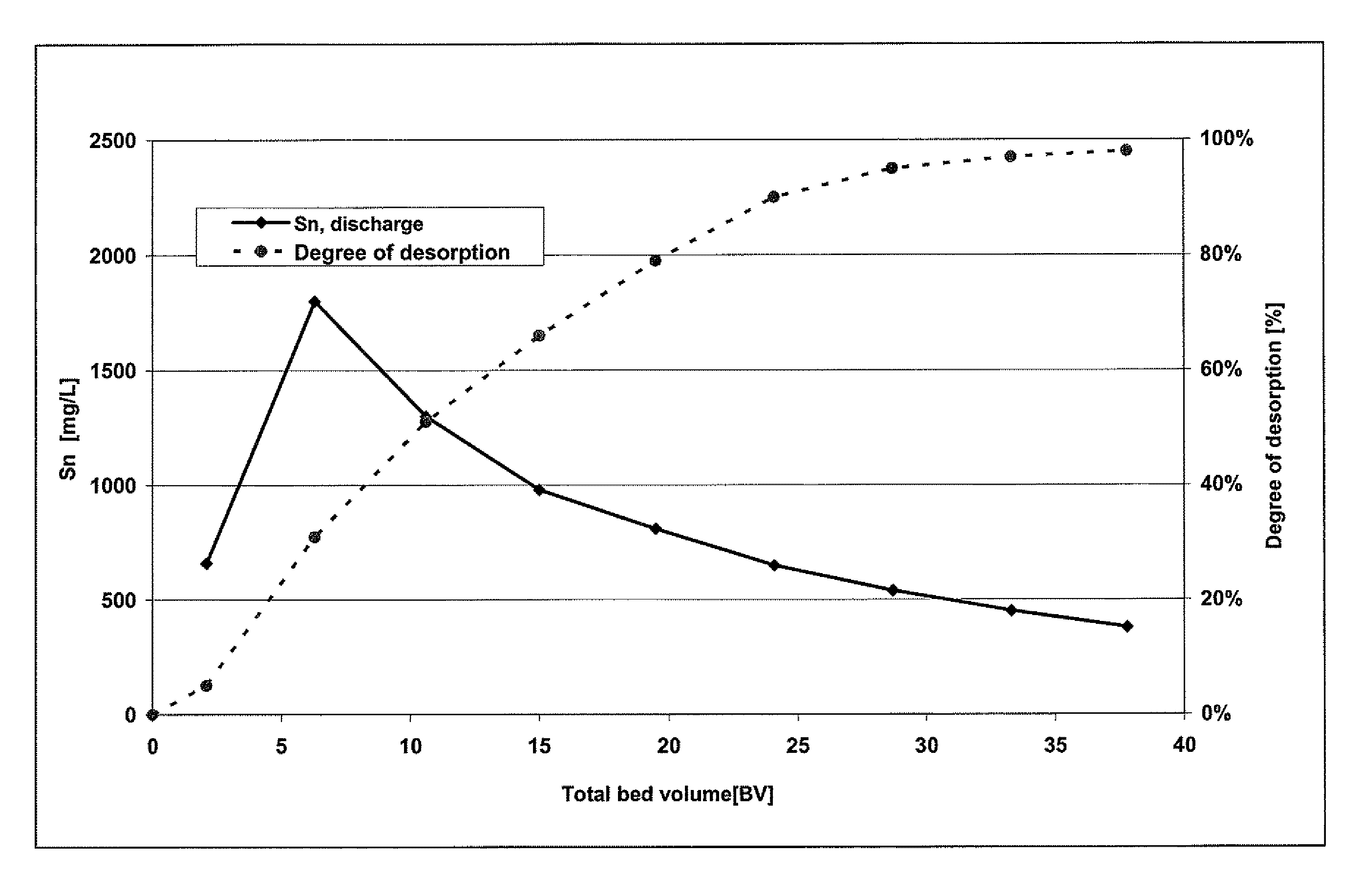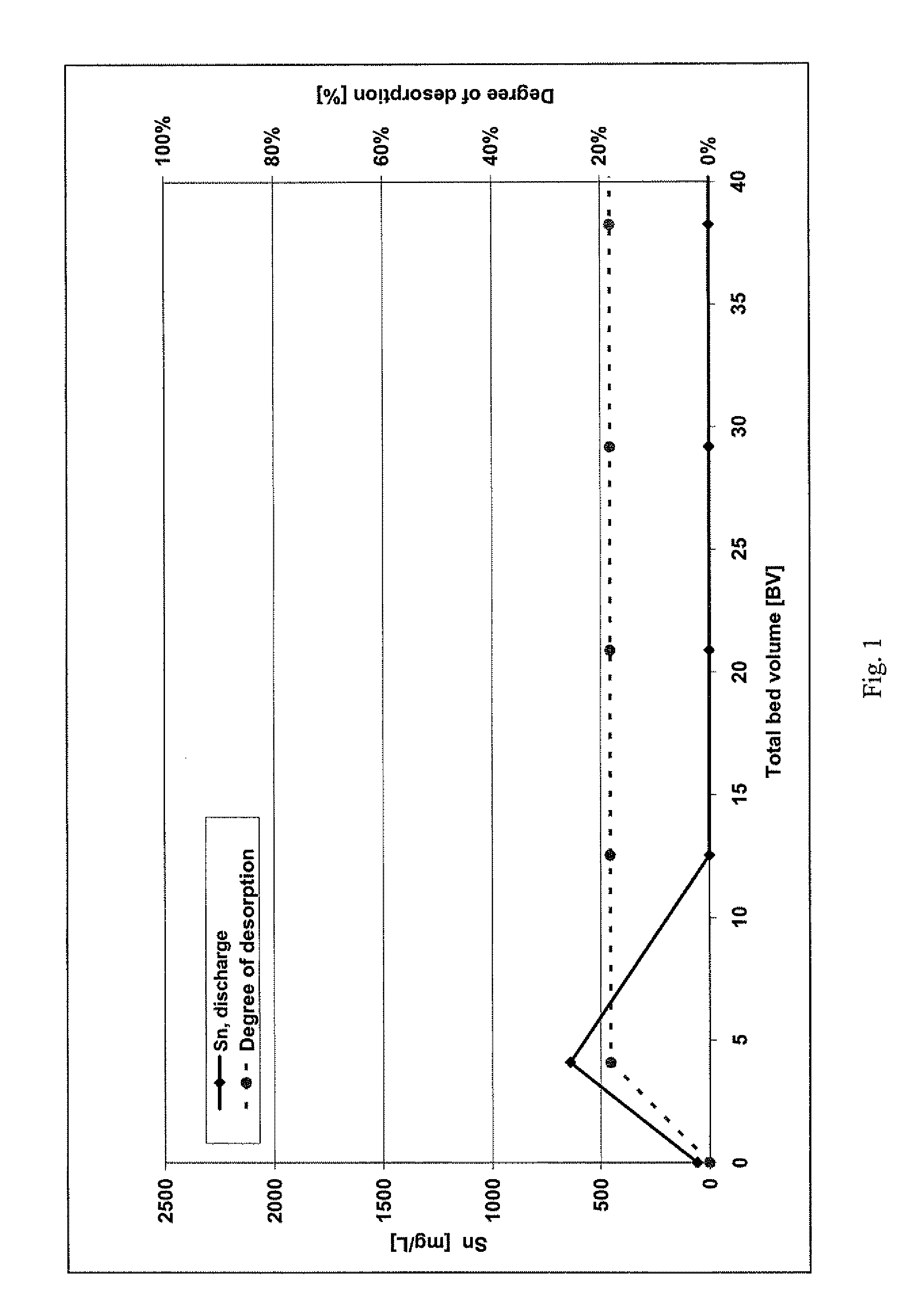Processes for the regeneration of an anion exchanger loaded with hexachlorostannate
a technology of anion exchanger and hexachlorostannate, which is applied in the direction of inorganic chemistry, halogen/halogen-acids, water/sludge/sewage treatment, etc., can solve the problems of large amount of heat neutralization released, often contaminated with heavy metals, and inability to regenerate the loaded ion exchanger using water
- Summary
- Abstract
- Description
- Claims
- Application Information
AI Technical Summary
Benefits of technology
Problems solved by technology
Method used
Image
Examples
examples
[0018]The loading of two anion exchangers was carried out with a model solution which was produced from tin tetrachloride (SnCl4) and hydrochloric acid with a concentration of 32 wt. %. The tin concentration of the model solution was approximately 100 mg / l. The proportion by weight (w) of the hydrochloric acid was in the range of between 30 and 32%.
[0019]In both anion exchangers, a strongly basic anion exchange resin (Lewatit® M500, Lanxess Deutschland GmbH) was employed.
[0020]The ion exchangers were loaded and also subsequently regenerated in a temperature-controlled column under the following conditions:
Column diameter:16.4 mmBed height:51 cmBed volume:108 mlQuantity of ion exchanger:67.9 gTemperature:22° C.Throughput:990 ml / hFiltration rate:4.7 m / h
[0021]In these examples, the ion exchangers were loaded with 56.8 mg Sn / g M 500 (38.1 g / l M 500) or 0.62 eq / l.
Comparative Regeneration:
[0022]Regeneration of the first ion exchanger was attempted with deionized water, and it was shown th...
PUM
 Login to View More
Login to View More Abstract
Description
Claims
Application Information
 Login to View More
Login to View More - R&D
- Intellectual Property
- Life Sciences
- Materials
- Tech Scout
- Unparalleled Data Quality
- Higher Quality Content
- 60% Fewer Hallucinations
Browse by: Latest US Patents, China's latest patents, Technical Efficacy Thesaurus, Application Domain, Technology Topic, Popular Technical Reports.
© 2025 PatSnap. All rights reserved.Legal|Privacy policy|Modern Slavery Act Transparency Statement|Sitemap|About US| Contact US: help@patsnap.com



